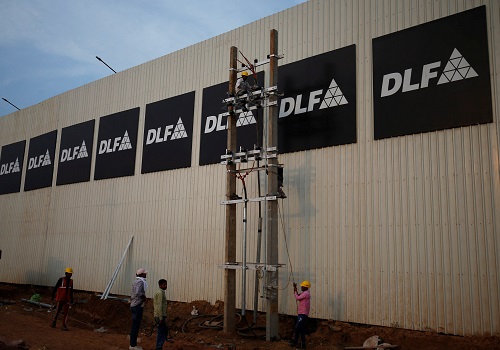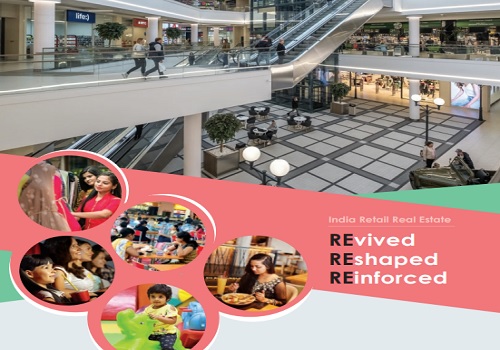BFSI Spills Beyond MMR into IT/ITeS Hubs, Professional Services Surge in Pune By Mr. Prashant Thakur, ANAROCK Property Consultants

Follow us Now on Telegram ! Get daily 10 - 12 important updates on Business, Finance and Investment. Join our Telegram Channel
Below are Views On BFSI Spills Beyond MMR into IT/ITeS Hubs, Professional Services Surge in Pune By Mr. Prashant Thakur, Director & Head - Research, ANAROCK Property Consultants
* IT/ITeS remains the strongest demand driver, accounting for 30-40% of total gross office absorption of approx. 8.8 mn sq. ft. in H1 2021 in Bengaluru, Pune & Hyderabad
* That said, Bengaluru & Hyderabad witnessed BFSI segment leasing share double since 2019
* In Bengaluru, share of BFSI at 13% in H1 2021 from 8% in 2019 & 15% in 2020; Hyderabad's share more than trebled to 38% in H1 2021 from 10% in 2019 & 19% in 2020
* In IT/ITeS hub Pune, share of professional services increased to 13% in H1 2021 vs 7% each in 2020 & 2019
To say the least, COVID-19 seriously disrupted the Indian office sector in 2020. The total sector-specific office leasing activity in the three dominant IT hubs Bengaluru, Hyderabad and Pune declined by approx. 55% against the preceding year – from 62.35 mn sq. ft. in 2019 to 27.80 mn sq. ft. in 2020. However, these three cities are witnessing a significant rise in leasing activity by the non-IT/ITeS sectors like the BFSI (banking, financial services and insurance) segment.
Prashant Thakur, Director & Head - Research, ANAROCK Property Consultants says, "BFSI firms are primarily attracted to these cities because of their more affordable rentals and the availability of relevant talent and workforce. It is clearly a hedge against future disruptions and a bid to ensure business continuity."
BFSI's Increasing Prominence
IT/ITeS hotbed Hyderabad recorded the highest rise in BFSI segment leasing activity. Of the total gross absorption of 12.35 mn sq, ft. in 2019, BFSI comprised a 10% share. This nearly doubled to 19% of the total 5.70 mn sq. ft. space leased in 2020. Interestingly, out of the 1.02 mn sq. ft. leased in H1 2021, the share of the BFSI sector rose to 38%.

Bengaluru saw a similar trends - from an 8% share in 2019 (of 42.6 mn sq. ft. gross absorption) to 15% in 2020 (of 17.8 mn sq. ft.), and 13% in H1 2021 (of 6.70 mn sq. ft.).

The Mumbai Metropolitan Region (MMR) – India’s most expensive real estate destination - was once the nation’s predominant BFSI hub preferred by most global and national players. Post the pandemic, many companies are adopting work-from-home and thereby optimising their operational costs.
Amid these new realities, the BFSI sector is finally seeing the feasibility of looking beyond MMR. Cities with sub dollar (under USD 1/sq/ft.) office rents and enough relevant talent pools are now gaining momentum.

Professional Services Surge in Pune
Meanwhile, many consulting companies’ delivery centres are looking at Pune to set up base in. The city offers a healthy mix of industrial and IT/ITeS real estate, with lower rental values and burgeoning infrastructure also pivotal decision drivers. The increased preference for Pune as a manufacturing hub for companies shifting out of China has been a major demand boost for the professional services segment.
Out of the total 1.09 mn sq. ft. office space leased in Pune in H1 2021, nearly 13% was by the professional services sector. In both 2020 and 2019, this sector's occupancy share was approx. 7%. In 2020, gross absorption in Pune was approx. 4.4 mn sq. ft. while in 2019 it was 7.4 mn sq. ft.

Future Trends
Despite the above, the IT/ITeS sectors will continue to lead in terms of share of commercial office leasing in these three cities. Demand for IT/ITeS-specific office spaces in Bengaluru, Hyderabad and Pune will gain further momentum in the coming years. However, the emergence of an alternate demand driver is crucial for regaining ground lostdue to the COVID-19 pandemic. We will see these cities’ office markets see a DNA-level transformation in the post pandemic era.
Above views are of the author and not of the website kindly read disclaimer










More News

Indians lead immigrants in creating unicorns in US: Report













